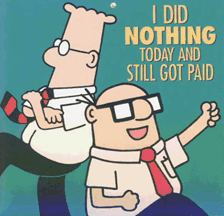Portfolio Results for 2015
I think readers of this blog would probably have guessed
that I did OK in 2015. AP Oil
gained >46%, Avi-Tech gained >38% but Sembcorp Industries crashed a hefty -34% (all returns before dividends) since my write-up
in this blog. What a crazy ride in 2015: On a portfolio basis and taking into
account dividends received, my Singapore portfolio went as high as +18.7%
(August) but ended off the year with a +12.8% gain while my Hong Kong portfolio went
from +48.5% (May) and ended 2015 with +25.7%.  |
| Will 2016 be a good year for stock markets? |
Despite a 15% decline in 2015, our STI index continues to
register losses in the first few days of 2016. From its peak of about 3550, the
index had sunk about 23%. Will 2016 be a down year again? Honestly, your guess is as
good as mine.
Opportunities Abound
For me, rather than trying to predict at the macro level, I
feel it is more fruitful to focus on valuations of individual companies.
Despite the uncertainty surrounding the market, make no mistake about it: there are more opportunities to take
advantage of than it was just a few months back. Uncertainty is the friend
of the buyer of long term values. Always be extra cautious in your dealings with the Mr Market but never be afraid of taking strategic advantage over him.
What I am going to do in 2016?
The wider
the fluctuations of the market, and the longer they persist in one direction,
the more difficult it is to preserve the investment viewpoint in dealing with
common stocks. I think it is of utmost importance for an investor to
have a logical process for investment and have the mental & emotional
fortitude to stick to it despite daily market gyrations & noises. Different
investors have different philosophies and the following is what I found quite useful (at least for me) thus far:
- Try to get a general sense how the business operate
- Ask yourself honestly if you can reasonably see the company still in existence and operating well >10 years later
- Limit your risk - ensure the company is in sound financial condition
- Limit your risk yet again - make sure the price you pay is significantly below your estimate of the business' value
- Diversify your risk adequately
- Have patience and conviction for value to be realized - the market for short term returns is very competitive but the market for longer term returns is much less competitive
These pointers are quite similar to my post on Our Investment Philosophy and I intend to adhere to it in 2016 and beyond.
Final Note
I’ve been slowly accumulating a few SG and HK stocks in the
past few months and one of them appears to be a rare find – having
reasonable defensive characteristics with potential for growth and selling at
extremely attractive prices. I intend to concentrate more on that particular
stock, probably towards 15-20% of my portfolio. If I have the time, I’ll
probably discuss more about them.
A few friendly readers actually emailed and asked if I’ve stopped
writing. I very much like to continue but will likely do so with shorter posts
and at a very leisurely pace. Meanwhile, I’ll be more than happy to discuss
investment related questions via the comments section of this blog or email at
secretinvestors@gmail.com. Happy stockpicking!






